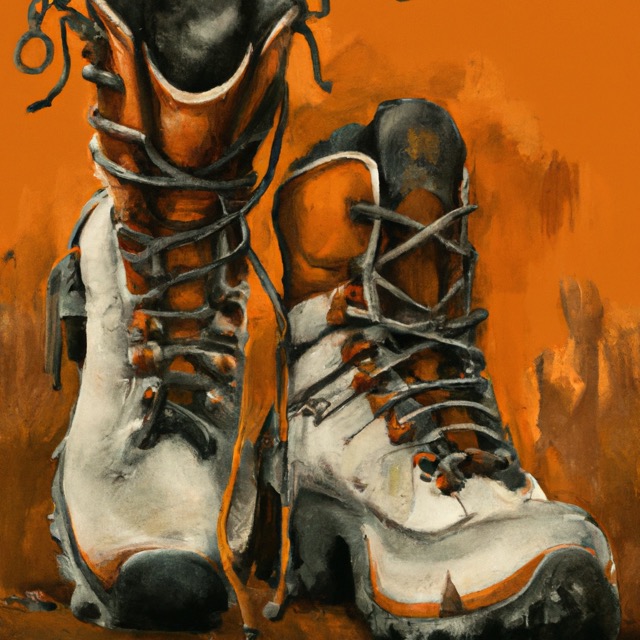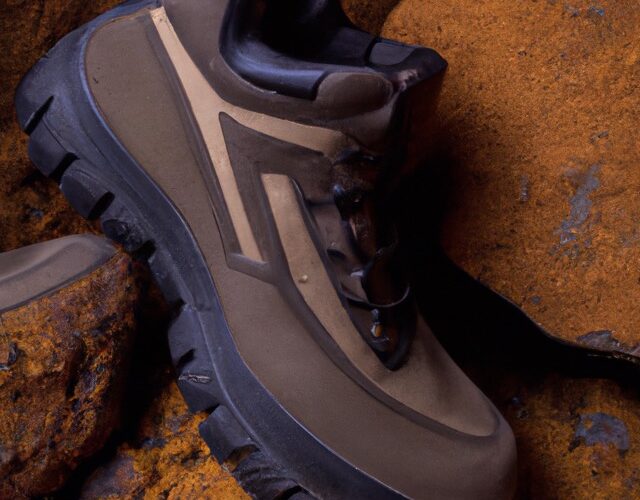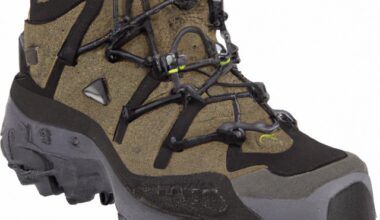Trekking is one of the most fulfilling outdoor activities and having the right gear can make a difference. Whether you’re embarking on a multi-day hike or a short day outing, having the right equipment is essential. Trek gear includes items such as backpacks, tents, sleeping bags, cook sets and clothes that are specifically designed to help you meet the challenges of outdoor trekking.
The right trek gear can mean the difference between an enjoyable and successful outdoor excursion and a miserable experience. With proper research and careful selection of equipment, you can ensure that your trekking trips will be an enjoyable experience.
This guide will provide essential information about the different types of trek gear that you should have for a successful and comfortable trekking experience. It will also explain the various factors to keep in mind when choosing the best trek gear for your needs and explain the advantages and disadvantages of buying new or used gear.
Types of Trek Gear
Trek gear refers to the equipment you would need for a short-term backpacking, camping or hiking trip. This gear includes packs, tents, sleeping bags, cook sets and clothing. These essential items are necessary to make your trek a success as they will provide you with the necessary comfort and safety while in the wilderness.
Packs
Pack selection is critical because you want to ensure you have enough storage space for all the items you need to bring on your trip. There are different types of packs available depending on the length of the trek, such as daypacks, overnight packs, and multiday packs. Daypacks are designed for short trips and typically have a capacity of 20-30 liters. Overnight packs are designed for one-night treks and have a capacity of 40-60 liters. Multiday packs can range from 60 to 90 liters and are usually used for trips lasting more than two nights.
Tents
When selecting a tent, size is important. You should choose a tent based on the number of people who will be joining you on the trek. Some tents are designed for one person and others for multiple people. Additionally, you should consider the weather conditions that you will be exposed to. Tents come in different fabrics and materials and some tents are designed for warmth and others for waterproofness. Finally, you should consider the weight of the tent. If you will be carrying the tent on your back, you want it to be lightweight.
Sleeping Bags
Your sleeping bag is an essential item when it comes to trekking. When selecting a sleeping bag, you will want to consider the season you will be trekking in. For colder temperatures, you should look for a down sleeping bag which will keep you warm even if the temperature drops below freezing. For moderately cold temperatures, a synthetic sleeping bag with a good insulation rating is sufficient. Additionally, you should consider the weight of the bag and your height. You should choose a bag that is comfortable and long enough to fit your height.
Cook Sets
Cook sets typically consist of a pot, pan, bowl, and cup. Pots and pans should be made of a durable material like stainless steel or aluminum, and have foldable handles for easy storage. Bowls and cups can be plastic, metal, or ceramic and should be lightweight. The size of the cook set should be appropriate for how many people will be eating with you. It’s also important to make sure the cook set is compact and easy to store in your pack.
Clothes
It’s important to select clothes that are both comfortable and functional while trekking. Clothes should be made of breathable, quick-drying fabrics that are suitable for the type of climate you’ll be in. You will want to bring a variety of layers as temperatures can fluctuate throughout the day. Additionally, you should consider having a waterproof jacket, as well as a hat and gloves for colder temperatures.
How to Choose the Right Trek Gear for Your Needs
Trekking can be a fun and rewarding adventure, especially when you have the right gear. When selecting the right trek gear, it is important to think about the type of terrain you will be hiking, the climate conditions, and your personal preferences. This guide will help you choose the right trek gear that meets all your needs and fits your budget.
What to Consider when Choosing Trek Gear
- Type of terrain – Depending on the type of terrain you will be trekking on, you will need different types of gear. For example, if you are going to be trekking on mountains or rough terrain, a sturdy trekking pole or crampon may be necessary.
- Climate conditions – It is important to consider the climate conditions of the area you are trekking in. You will need to suit up with clothes appropriate for the weather, such as a warm jacket for cold climates or light clothing for hot climates.
- Personal preferences – Also keep in mind that you should always choose trek gear that suits your personal preferences. For example, if the pack straps on a certain bag don’t feel comfortable, it’s best to look for an alternative.
Types of Trek Gear
When choosing the right trek gear, it is important to think about the type of equipment you need. Common types of trek gear include backpacks, tents, sleeping bags, cook sets, and clothes.
Backpacks
A backpack is perhaps the most important piece of trek gear. Backpacks come in a variety of sizes and shapes, so it is important to choose the one which suits the hike you are planning. The size of the backpack should be based on the duration of the trek, the amount of equipment you are carrying, and the size of it.
Tents
A tent is essential for any trekker who plans to spend time outdoors and sleep under the stars. Tents come in all shapes, sizes and designs, from single person bivy sacks to large family-sized tents. Before buying a tent, it is important to consider the number of people using it, the terrain you will be trekking on and the weather conditions.
Sleeping Bags
Another important piece of trek gear is the sleeping bag. To make sure you stay warm and comfortable during the night, choose a sleeping bag suited for the climate conditions. Down-filled sleeping bags are lightweight and offer better insulation compared to synthetic-filled sleeping bags.
Cook Sets
When you’re trekking, it is important to have the right cooking equipment. Invest in a lightweight cook set that includes pots and pans and other essentials such as a stove and cutlery. Try to look for cook sets made from lightweight materials such as titanium or aluminium.
Clothes
Lastly, have enough clothes for your trek. If you are trekking in cold climates, choose clothes made of wool or layered items. Make sure you bring enough hiking shoes and socks that can handle the tough terrain, and don’t forget to bring rainwear and a hat to protect yourself from the elements.
Storing, Cleaning, and Maintaining Trek Gear
Once you have selected the right trek gear for your needs, it is important to know how to store, clean, and maintain it properly. Storing trek gear correctly is important to ensure it lasts for many years. Items like tents, sleeping bags, and backpacks need to be stored in cool, dry places and kept away from extreme temperatures or sunlight.
It is also important to clean and maintain trek gear regularly to increase their lifespan. Backpacks should be washed with a mild soap and water twice a year. Tents should be wiped down to remove dirt and debris and checked for any damage or holes. Cook sets should be cleaned with hot water and a brush before drying them thoroughly.
Finally, check your trek gear every before and after each use. Keep your trekking poles, ropes, and carabiners in good condition and replace any worn-out or broken parts immediately. This will ensure your trekking gear is safe and secure throughout your trip.
Buying Used Versus New Trek Gear
The decision to buy used versus new trek gear largely depends on your personal preference and
Tips and Tricks for Storing, Cleaning, and Maintaining Trek Gear
When it comes to trekking, having the right gear is essential. Not only do you need the right type of gear, but you also need to take care of it. Proper storage, cleaning, and maintenance of trek gear will ensure it’s ready whenever you need it out on the trails. Here are some tips and tricks on how to keep your trek gear in top shape.
Storage
When storing your trek gear, keep in mind that moisture and mildew can easily build up. To prevent this, store your trek gear in a dry place away from direct sunlight. Hang any clothes or sleeping bags to avoid them getting flattened. Store backpacks with some stuffing (such as paper towels) to help keep their shape.
Cleaning
It’s important to clean your trek gear regularly to keep them in pristine condition. Before cleaning anything, read the care instructions on the label. For general cleaning, use a cloth or soft brush with soapy water, then wipe down your gear with a dry cloth. If you’re dealing with stubborn stains, try using baking soda or diluted white vinegar. Be sure to avoid harsh detergents or bleach.
Maintenance
Be sure to inspect your trek gear regularly. Check zippers, seams, straps, and buckles for any signs of wear and tear. Repair any damage right away to ensure your gear lasts longer. It’s also important to check the weatherproofing of fabric and synthetic materials. If they’re losing their water-resistant properties, you can restore it with a wash-in or spray-on sealant.
Benefits and Drawbacks of Buying Used Versus New Trek Gear
When it comes to trek gear, you have two main options: buying new or buying used. Both options have their benefits and drawbacks. Here, we will explore the advantages and disadvantages of both.
Benefits of Buying New Trek Gear
When you buy new trek gear, you can be sure that the gear is high quality, up-to-date, and in good condition. Additionally, you have access to a full warranty from the manufacturer, which can save you money if something goes wrong later on. New gear is also often designed to be lightweight, which is essential for trekking long distances.
Benefits of Buying Used Trek Gear
Buying used trek gear can save you a lot of money. You can often find high-quality gear at a fraction of the cost of buying new. It’s also a great way to support sustainable practices and the re-use of materials. In addition, you won’t necessarily have to compromise on the quality of the gear. If you take the time to shop around, you can find excellent second-hand gear.
Drawbacks of Buying New Trek Gear
Buying new trek gear can be expensive. You are paying for the convenience of having something that is brand new, which can add a significant amount to the price tag. Additionally, many manufacturers make a lot of efforts to get you to buy the newest version of a product. Newer versions tend to be less reliable than older versions, as they are untested in the field.
Drawbacks of Buying Used Trek Gear
Although buying used can save you money, you must be careful – some gear may be damaged or outdated, which can cause you trouble in the field. Moreover, you won’t have access to a warranty, so if any problems arise you may be stuck with them. Additionally, while some used gear is still in great condition, you may not get the same performance as with a new item.
Recommended Products for Trek Gear
When choosing the right trek gear for your needs, there are a variety of product options available. Here are some of the most popular and recommended products on the market today.
Backpacks
Packs are essential treks gear pieces, and there are a variety of sizes, styles, and features to consider when selecting the perfect backpack for your adventure. For those looking for lightweight and durable functionality, the Osprey Exos 58 Backpack may be the best choice. This model offers ample storage space with 3850 cubic inches of capacity, along with loads of extra pockets and compartments. It also has a comfortable airscape back panel and harness system that is designed to provide optimal support and breathability.
Tents
Finding the perfect tent for your trek is important; it should be strong and reliable enough to handle harsh weather, yet lightweight enough for easy carrying. The Big Agnes Copper Spur HV UL2 Tent is a great option for those seeking durability and dependability in their tent. Its double-door design makes it easier to get in and out, while thoughtful interior pockets make it easier to store smaller items. The integrated media pocket keeps your phone or music player safe, while the adjustable stake-out loops allow you to customize the tent’s pitch.
Sleeping Bags
When choosing a sleeping bag, consider the temperature rating and material. The Kelty Cosmic Down 20 Degree Sleeping Bag is a great choice for trekkers looking for a reliable, lightweight sleeping bag. It is made of high-quality, water resistant down insulation and features an ergonomic hood to keep your head warm. The zipper glides easily, allowing for quick set up and break down. It also comes with a stuff sack for easy packing and storage.
Cooksets
For those who need a convenient and versatile cooking system, the GSI Outdoors Halulite Microdualist Cookset is a great option. This set includes everything you need for outdoor cooking including two small non-stick aluminum pots with lids, a frypan, and two insulated mugs with sip-it tops. The pots are lightweight and feature a heat-resistant silicone handle, while the frypan has a convenient folding handle that makes storage and transport a breeze.
Clothing
The right clothing is essential to ensure comfort during your trek. The REI Co-op Trailbreaker Jacket is a great option for those looking for lightweight warmth and wind protection. This jacket is waterproof and features an adjustable, helmet compatible hood, along with pit zips to help regulate body temperature. It also has several pockets, so you can store all of your important items.
Finding the right gear for your next trek should involve careful research and consideration. Understanding the types of gear available, how to choose the best gear for your specific needs, and the benefits and drawbacks of buying used versus new gear can help you make an informed decision. Recommended products like the ones outlined above will provide the convenience, durability, and comfort you need for your trek.
Conclusion
When it comes to trek gear, there are many considerations to make. It’s important to choose the right gear for your trips and activities, as well as to ensure it is properly cared for and maintained. This guide will provide you with an overview of the different types of trek gear, as well as tips on how to choose the right gear, advice on getting the most life out of it, and a few recommendations of products to consider.

To summarize, some key takeaways included in this guide are: understanding the basics when choosing the right gear, considering whether you should buy new or used gear, knowing the different types of gear, and learning tips and tricks for storing, cleaning and maintaining items. Armed with this knowledge, you’ll be ready to hit the trail with the perfect amount of gear!
Trek Gear – FAQS
What kind of gear do I need for a trek?
You’re going to need a few essential pieces of gear like a \u003cstrong\u003ebackpack\u003c/strong\u003e, sturdy \u003cstrong\u003etrekking poles\u003c/strong\u003e, a sleeping bag, a \u003cstrong\u003ehat\u003c/strong\u003e, gloves, \u003cstrong\u003ebase layers\u003c/strong\u003e, and a good pair of \u003cstrong\u003esocks\u003c/strong\u003e. Other options to consider will depend on the type of trek you’re planning, such as \u003cstrong\u003esunglasses\u003c/strong\u003e, a \u003cstrong\u003eGPS\u003c/strong\u003e device, or \u003cstrong\u003efanny pack\u003c/strong\u003e.
How do I choose my backpack?
When choosing a backpack, you want to make sure it’s \u003cstrong\u003edurable\u003c/strong\u003e and \u003cstrong\u003elightweight\u003c/strong\u003e. Look for a pack that’s designed for \u003cstrong\u003ebackpacking\u003c/strong\u003e and offers features like extra padding and a comfortable hip belt. It’s also important to choose a size that’s appropriate for the length of your trek.
What kind of hat should I use for a trek?
You’re going to want a hat that provides \u003cstrong\u003ewarmth\u003c/strong\u003e and protection from \u003cstrong\u003emoisture\u003c/strong\u003e. A beanie or a wool cap will work well. If you’re going to be trekking in hot weather, you may want a hat that provides shade, like a baseball cap or a wide-brimmed hat.
How do I choose the right pair of socks?
Good socks are essential for trekking. You want to choose socks that are \u003cstrong\u003edurable\u003c/strong\u003e and fit properly. Look for socks that are made from moisture-wicking materials and that provide extra padding and support where you need it most.
What is a base layer and why do I need one?
A base layer is a piece of gear that you wear next to your skin. It provides insulation and helps regulate your body temperature. Look for base layers that are \u003cstrong\u003elightweight\u003c/strong\u003e, moisture-wicking, and offer a good range of motion.

